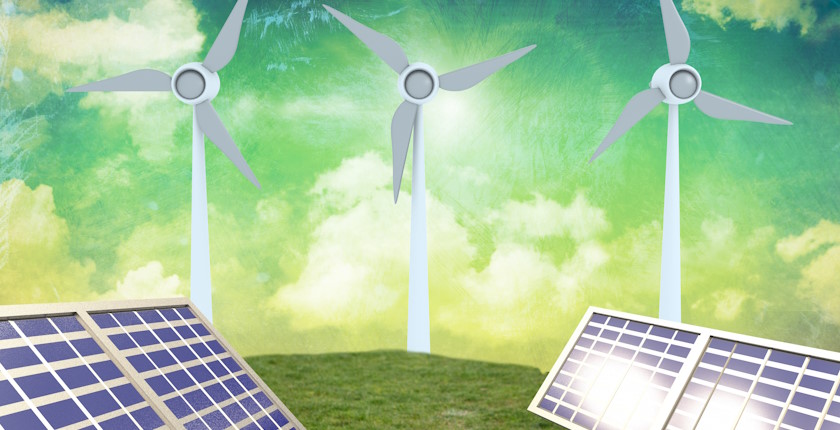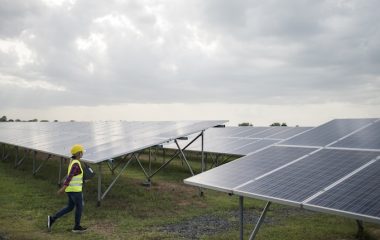
Photo: Creativeart on Freepik
After a period of historic hardship, the electricity sector in Europe showed several positive trends, according to Eurelectric. Gas consumption dropped by 19% and millions of consumers installed heat pumps, but unprecedented investments in grid expansion are necessary to accelerate electrification and the penetration of renewables, the organization said.
Last year marked a significant turn in the energy sector, the annual Power Barometer showed, issued by Eurelectric. After a period of historic hardship, the sector showed several positive trends, the European electricity industry’s association pointed out.
Following the unprecedented price spikes and policy interventions in 2022, gas consumption dropped by 19% and millions of consumers shifted to heat pumps. The drop was registered in the period between August and January, against an average from the previous several years.
The European Commission urged for a reduction of gas consumption by 15%, but the average drop reached 19%
European Union member states actually come out of the winter with some of the highest natural gas reserve levels in history. In comparison, the European Commission has called for a reduction in gas consumption of 15% at the height of the energy crisis.
At the same time, power prices subsided. In wholesale, they dropped from a 2022 average of EUR 227 per MWh to EUR 100 per MWh, with retail prices following suit, the trade body added.
“We need more lines, more digitalisation and more climate resilience to get our grids fit for net zero. This requires a change in the regulatory approach. Grid operators must be allowed to make anticipatory investments so we can start preparing for higher electrification,” Eurelectric’s Secretary General Kristian Ruby said.
Mixed picture among renewables technologies
The deployment of new generation capacity varied strongly per technology. Whereas photovoltaics registered record deployment of 41 GW, wind installations were trailing both onshore and offshore due to a combination of supply chain issues, slow permitting and poor tender design, the document’s authors noted.
The energy storage sector must almost quadruple the capacity to 191 GW by the end of the decade
Growing variable wind and solar generation require an increase in firm and flexible technologies to stabilize the system, Eurelectric said. Although installations have increased to 4.5 GW in 2022, around 11 GW to 14 GW would be needed per year to meet the future system needs, the organization explained.
In 2021, energy storage capacity grew by 2.5 GW and 6 GW is expected for this year. Last year there was 51 GW in energy storage capacity, of which pumped storage hydropower accounted for 47 GW. Eurelectric calculated that the sector needs to grow to 191 GW by the end of the decade.
Investments in distribution grid are accelerating, but not enough
Investments in the power distribution grid hit a record EUR 35 billion in 2022, and this year they are expected to grow to EUR 36 billion, the report reveals. But Eurelectric says the annual average in the period 2020-2050 needs to be catapulted to EUR 65 billion.
“The rule of thumb is that we should be investing EUR 0.67 in the grid for every EUR 1 invested in generation capacity. Today, that figure is closer to EUR 0.30,” the document reads.
One notable setback was the drop in production in the energy-intensive industry. The aluminium, zinc, and silicon subsegment took 35% to 45% of its capacity offline last year and there is a risk that the closures would be permanent, according to Eurelectric.
As for heat pumps, sales jumped 36% in 2022 to three million units, bringing the cumulative total to 20 million. The level needs to reach 55 million by 2030, the report adds.
Last year there was 80 GW of capacity in wind power projects stuck in administration.
On the emissions front, the electricity sector reduced the level in the period from January through August by 15.1% on an annual basis, to an all-time low of 208 grams of carbon dioxide per kilowatt-hour.
A part of the report covered the delays in permitting for wind farms. In 2022 there was 80 GW of capacity stuck in administration. In absolute terms, France, Finland, and Spain had the highest amounts waiting for approvals, in that order – close to 16 GW, almost 15 GW and 13 GW.
Greece and Croatia were among the biggest laggards. The former was sixth in Europe with just under 4 GW and right behind Germany, while the latter, number nine on the list, had two times less on hold.


















Be the first one to comment on this article.